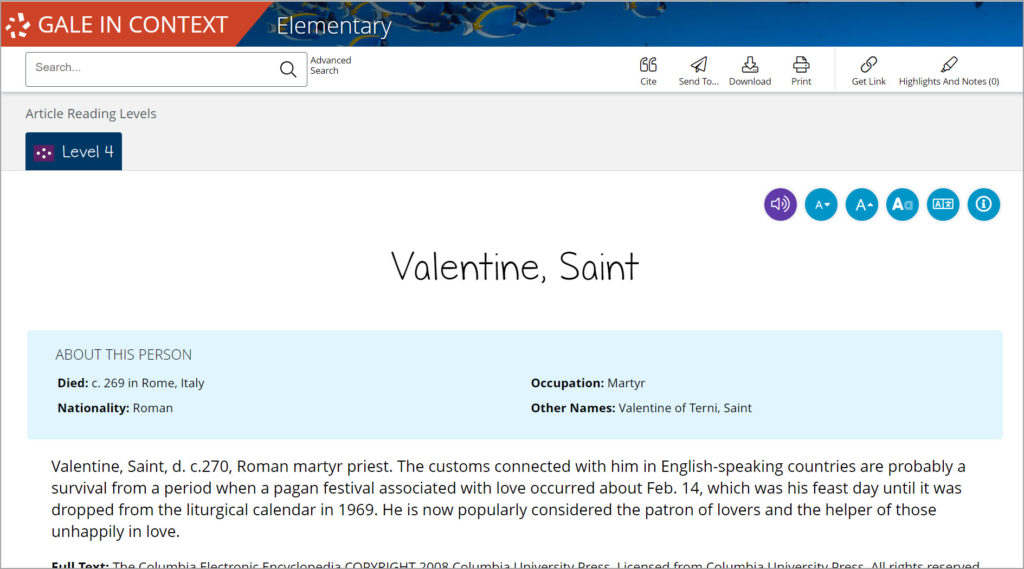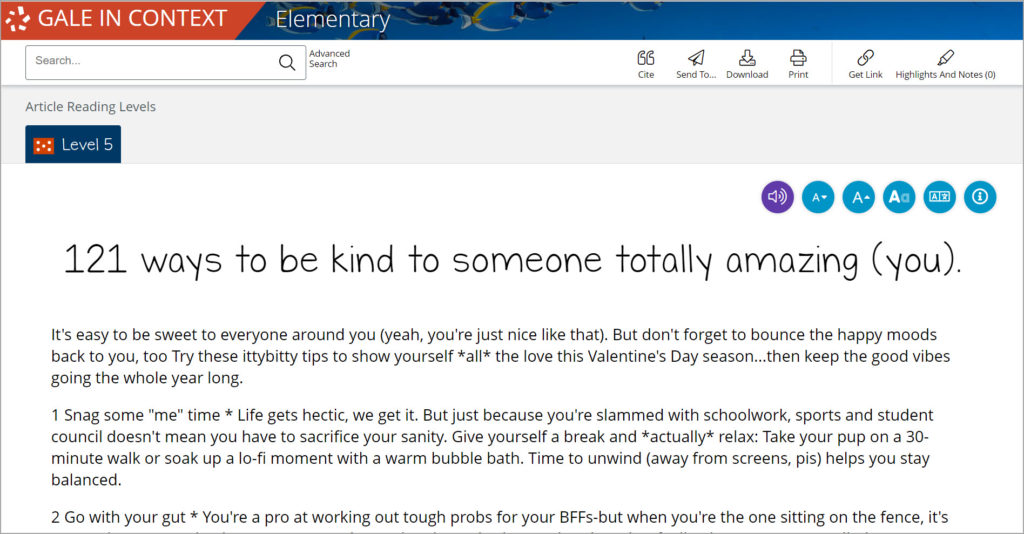American Valentine’s Day is defined by chocolate boxes, flowers, and dinner dates, but the holiday has some intriguing historical roots and is celebrated in several countries around the world. This February 14 is a school day, so why not create some engaging Valentine’s Day-themed lesson plans for your young learners?
Students can still craft Valentine’s cards and pass candy around, but with Gale In Context: Elementary, educators and librarians can pique curiosity and explore the stories behind Valentine’s Day too.
Develop History of Valentine’s Day Lesson Plans
Guide your students to the Valentine’s Day entry in Gale In Context: Elementary. This article is curated with young researchers in mind, presenting accurate, age-appropriate facts via simple sentences and images. Encourage elementary readers to research the section on the holiday’s history.
The story of Valentine’s Day likely began with the Romans, who held a special festival each February. Girls would put their names in an urn, boys would select a match from the vessel, and the pair would then attend the festival together.
There are also legends of a religious figure named Valentine, who famously married couples despite the practice being forbidden by the emperor. Many scholars suggest that the holiday was only romanticized in the works of Geoffrey Chaucer and William Shakespeare, thus becoming the holiday as we know it today. In truth, there aren’t a lot of hard facts behind the holiday’s historical roots, but that is part of what makes this an engaging elementary school research topic.

Discussion Idea: Once your students have read through the holiday basics, ask them to share any Valentine’s traditions they practice at home. Make a list of the different customs and ask students to consider why families may have different practices for different holidays.
Create Fun Holiday Activities
Consider teaching children early that Valentine’s Day can be a time to celebrate themselves too. Have students brainstorm ways to be kind to themselves, craft their own valentines, or create a playlist of their favorite songs to play throughout the day’s activities.

Of course, making a valentine’s card for a friend can be fun too. Exchanging valentines among classmates reminds students Valentine’s Day can be about friendship and encouragement, no matter someone’s gender or relationship status.
Activity Idea: Take inspiration from the Romans and have half the class place their names in a jar, then have the other students select their valentine’s partner at random. Direct each pair to chat, learn about their partner’s interests, and make each other valentine’s cards.
Instructors can find more themed activity ideas in Gale In Context: Elementary, including suggestions for games that promote self-care and social and emotional learning. After all, Valentine’s Day can be a time to celebrate love for everyone, especially ourselves.
Take Advantage of Customization Tools
Young readers develop skills at different paces. Gale In Context: Elementary offers different reading levels for the same content to help all readers, whether beginner or more advanced, learn the same topic in a format that adapts to their abilities. Topic pages feature supplemental reading aids, like key vocabulary definitions. Content is organized into manageable paragraphs so young learners aren’t overwhelmed by big blocks of text.
Gale In Context: Elementary articles have a built-in audio feature as well. Students who may be struggling to read can access the text-to-speech software for additional support, so they can read along while the article is read aloud. Elementary learners can further customize their display settings, adjusting the font size, spacing, and color, which can help children who may have visual disabilities. They can also adjust the entire article’s font, including an option for OpenDyslexic, which is a typeface that can help combat symptoms of dyslexia.
Activity Idea: Encourage students to explore different mediums in their research. Within the Valentine’s Day collection in Gale In Context: Elementary, have students select one image or video, one audio file, and one text-based result. Have them summarize what they liked or did not like about the different learning formats.
Not a Gale In Context: Elementary subscriber? Get more details or connect with your rep.

